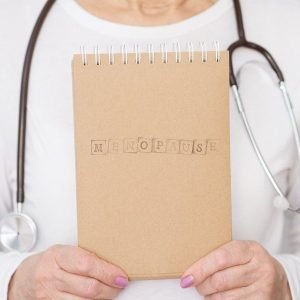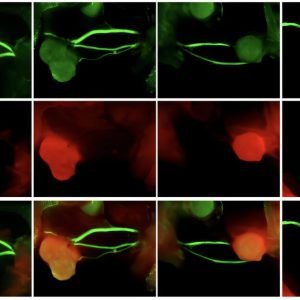
Benefits and harms
The use of any therapeutic intervention should involve a calculation of the benefit to harm balance, which has three aspects:
1. The possible benefits Benefits do not necessarily accrue when an intervention is introduced, and there is no way of predicting in advance in an individual whether benefits will occur and, if so, to what extent, even if there is an average expectation from the results of clinical trials. Likewise, there is no single word that describes a condition present in the individual that can predict a benefit with some probability, for example genetic variants of tumour proteins.
2. The possible harms Similarly, harms do not necessarily occur after the introduction of an intervention. However, in contrast to benefits, there is a word for a condition that can result in a harm with some probability; it is called a hazard. Use of a pharmacological intervention, for example, itself constitutes a hazard, but other hazards include aspects of the individual that increase the probability of harm, for example, renal or hepatic impairment or genetic variants.
3. The possible harms of not using the intervention In this case the hazard is the disease that presents for treatment, which can result in harms with some probability, which the intervention is intended to mitigate. If it is likely that the condition will resolve spontaneously, intervention may not be necessary.
The probability that a hazard will turn into a harm is called the risk. In the past, the word “risk” has also been used to imply the possibility of a good outcome, but today it is almost universally reserved for the probability of harm.
All this shows that we lack terms to describe (a) a condition, comparable to a hazard, that predicts benefit in the way that a hazard predicts harm and (b) the chance that that prebeneficial condition will generate benefit, in the way that “risk” describes the chance that a preharmful hazard will generate a harm.
Here I therefore suggest terms that could be so used. In doing so I restrict my discussion to the English language. Translations into other languages may or may not be helpful; as I have elsewhere pointed out—in some languages the same word is used to mean both “hazard” and “risk” in pharmacovigilance.1 In Dutch for example, “risico” means both risk and hazard, as does “riesgo” in Spanish. In pointing this out, I am also aware that the Oxford English Dictionary (OED) gives some meanings of the word “hazard” as “A risk of loss or harm posed by something” and “Risk, danger, jeopardy.”2
A beneficial counterpart to “hazard” The word “hazard” is thought to derive from an Arabic word for a die, the thing that you throw in a game of dice, al-zahr, pronounced az-zahr.2 In Greek the corresponding word was κύβος a cube, and so “cubard” might be the word we want. However, there is another word, more attractive. The Greek word for the upper bone in the foot, on which the tibia rests, was ἀστράγαλος, and because the astragalus bones were used as dice, the plural, ἀστράγαλοι, came to mean “dice.” Now the Greek word for a star, ἀστήρ, was from a different root, but its superficial similarity to ἀστράγαλοι makes the latter a starry candidate for the word that we are looking for. I therefore propose “stragard” as the beneficial counterpart to “hazard.”
A beneficial counterpart to “risk” The origin of the word “risk” is not clear. The OED traces it back to post-classical 12th century Latin, resicum or risicum, but no further.3 This is strange, because these words must surely come from the classical Latin verb resecare, to cut down, of which resicare is a variant, coming in turn from the IndoEuropean root SEK, to cut. A ship at sea ran the risk of being cut down if it strayed onto rocks. Latin has many cutting words, but the one that seems best suited to the task is abscido, to cut out or amputate, as in cutting away the disease. This suggests “abscisk” as a beneficial counterpart to “risk.”
Definitions
Thus, we now have four definitions to use in pharmacovigilance:
● stragardn. a condition associated with the possibility of a beneficial outcome during a would-be therapeutic intervention
● hazardn. a condition associated with the possibility of a harmful outcome during a would-be therapeutic intervention
● absciskn. the possibility that a stragard associated with a would-be therapeutic intervention will be turned into a beneficial outcome
● riskn. the possibility that a hazard associated with a would-be therapeutic intervention will be turned into an adverse outcome
Fictional drugs and the benefit to harm balance
I define fictional drugs as non-existent medicines, intended for human use, invented for the purposes of some forms of fiction, usually novels, but also plays or films, including TV dramas.
I have elsewhere discussed the use of fictional drugs in novels,45 and especially dystopian novels.6 Such drugs possess certain typical properties:
● to protect against disease, like BlyssPluss in Margaret Atwood’s Oryx and Crake;
● to produce benefit in the treatment of disease, for example kingsfoil, also known as athelas and asëa aranion, used by Aragorn to treat Faramir in J R R Tolkien’s novel The Return of the King; in such cases the benefit to harm balance is usually highly favourable, particularly because such interventions are used only in the short term;
● love potions7; these are unlikely to cause direct harm to the individual who takes them, given their prime purpose; however, falling in love with the wrong person might not be a good idea, as we see in A Midsummer Night’s Dream when Puck squeezes the juice of love-in-idleness into the wrong eyes, or in Wagner’s Tristan and Isolde, when Tristan drinks the love potion that was intended for King Mark. This illustrates a problem that we have with the definitions of adverse events, adverse effects, and adverse reactions8—the classifications do not readily accommodate knock-on adverse outcomes that are not directly attributable to the drug but would not have occurred had it not been used;
● to mimic death, as in the unnamed potion supplied to Juliet by Friar Laurence and the supposed love potion prepared by Gynecia in Philip Sidney’s Arcadia7; such drugs are designed to be used only when required and are unlikely to cause actual harm to the individual who takes them, although again knock-on effects, this time in those who witness the primary effects, may be devastating, as the example in Romeo and Juliet shows;
● to relieve fears and anxiety and promote social harmony, like Huxley’s soma in Brave New World and Blanketrol in Jonathan Lethem’s Gun, With Occasional Music;
● as hallucinogens, like Can-D and Chew-Z in The Three Stigmata of Palmer Eldritch and ubik in Ubik, both by Philip K Dick and Moloko Plus in Burgess’s A Clockwork Orange;
● to enhance sexual abilities and pleasure, as in BlyssPluss in Margaret Atwood’s Oryx and Crake;
● to prolong life, as in the “Gift of Life” in Walter Besant’s Inner House, melange and Water of Life in Frank Herbert’s Dune, and boosterspice in Larry Niven’s Ringworld.
Fictional drugs in utopian fiction
The benefit to harm balance of fictional drugs is generally unfavourable in dystopian fiction. For example, in the last four cases in my list above, although the vast majority of fictions appear initially to be describing perfect drugs, they then intimate a very unfavourable benefit to harm balance, because of adverse events, often involving drug dependence and harsh withdrawal effects.
This is particularly true of the perils, whether pharmacologically induced or not, of immortality without the benefit of perpetual youth. We see this in, for example, the Greek myth of Tithonus, endowed with the first but not the second, whose wife, Eos, the Goddess of the Dawn spares him the pains of extreme old age by turning him into a chirruping insect.
Similarly, in his third voyage, to Laputa, Balnibarbi, Luggnagg, Glubbdubdrib, and Japan, Gulliver describes the plight of the Struldbrugs of Luggnagg, making it clear that their genetic immortality becomes extremely dystopic after the age of 80. In World of Ptavvs (1966) Larry Niven described the Struldbrugs’ Club, “not the only club with a lower age limit on its members [but] the only club whose age limit rises one year for every two that passes.” The Struldbrugs have access to the best medical care in the world, provided by “autodocs,” involving “treatment tanks [that] still looked like oversized coffins” and the use of a range of unusual interventions: “The ’doc had hooked by induction into his spine and done deep knee bends to build up muscle tone; recharged the tiny battery in his heart; and added hormones and more esoteric substances to his bloodstream. Localized ultrasonic pulses had applied the Ch’ien treatment. A manicure and pedicure had finished the checkup.” We are not told what the esoteric substances were. Nevertheless, it’s not clear that the benefit to harm balance of the regimen to which they were subjected was necessarily favourable—many of the club members were decrepit. That’s why the club is called after the Struldbrugs.
Are things any different in utopian (or eutopian9) fiction? One might expect so, but in fact many utopian novels describe social and political systems, in which drugs are not needed and medicines are rarely mentioned. And perhaps the authors of utopian fiction understand the risks of all pharmacological interventions. When drugs are mentioned it is usually in passing. For example, in Limanora: The Island of Progress (1903) “Godfrey Sweven” (John MacMillan Brown) refers to “a sleep-expelling drug” used to “take precautions against the somnifaction of [an] army” but it has little bearing on the story, particularly since it fails to work. The medical aspects of the tale depend mainly on electrical manipulations.
In some cases drugs are proscribed. The Case of the Fox (1903) by William Stanley is an example: “The great causes of our former unhealthy state were over-eating, over-drinking, social immoralities, and the poisonous effects of constantly taking drugs. We gave our strong natures no chance of a perfect condition. Over-eating suffused our blood-vessels, causing gout, apoplexy, and other ailments by which the natural exercise for the body became impossible. Smoking and drinking muddled the brain and dulled the healthy action of the nerves. Drugs weakened the digestive system and diseased the bowels. The evils of these things are now inculcated in early education, so that many of our temperate children will now pass from babyhood to old age without indigestion or tasting alcohol or drugs of any kind.”
There are, however, a few exceptions.
For example in The Nexus Trilogy, Nexus (2012), Crux (2013), and Apex (2914), by Ramez Naam, nano-engineered drugs, known generically as “nexus,” have been synthesised, with the potential for widespread public benefit, were it not for the fact that the government of the day has made them illegal, fearing the consequences of widespread use. In the end the drugs become available, but then (spoiler alert) fall into the hands of terrorists, who misuse them. The trilogy is not primarily utopian, but the nanodrugs are intended to be used for good: “The drug that had transformed him could transform the world. He would make it happen.” And certainly the benefit to harm balance when the drugs are properly used, is favourable. It is their misuse that causes the harm.
Aldous Huxley
A major exception comes from the man who invented soma in Brave New World (1934) and described his own experience of using mescalin in The Doors of Perception (1954). At the end of his life Aldous Huxley attempted a utopian novel, Island (1962), in which the so-called “moksha-medicine” plays an important part in generating the utopian society that he described: “With four hundred milligrams of moksha-medicine in their bloodstreams, even beginners—yes, and even boys and girls who make love together—can catch a glimpse of the world as it looks to someone who has been liberated from his bondage to the ego. … Just how the moksha-medicine produces those unusual stimuli we haven’t yet found out. The important fact is that, somehow or other, it does produce them. And somehow or other, it also does something unusual to the silent areas of the brain, the areas not specifically concerned with perceiving, or moving, or feeling.”
The moksha-medicine induces “visionary or even fully liberating experiences” in quite ordinary people and “leads you to the same [mystical] place as you get to in meditation.”
The moksha-medicine is technically an entheogen, “A psychedelic substance (typically a plant or fungal extract) or drug, esp. when used in a religious ritual or to bring about a spiritual experience.”10
In Huxley’s hands the moksha-medicine is the perfect entheogen. If any harm is going to come to the community that uses it, it will not come from the medicine. The ideal benefit to harm balance.
References
- ↵
- ↵
“hazard, n.” Oxford English Dictionary. Oxford University Press. June 2024. doi:10.1093/OED/1204426575.
- ↵
“risk. n.” Oxford English Dictionary. Oxford University Press. June 2024. doi:10.1093/OED/2698784569.
- ↵
- ↵
- ↵
- ↵
- ↵
- ↵
- ↵
“entheogen. n.” Oxford English Dictionary. Oxford University Press. July 2023. doi:10.1093/OED/8200305837.








